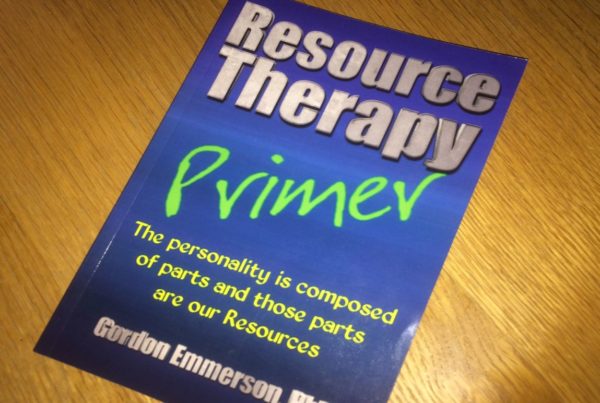Unlocking Wholeness: A Journey Through Inner Child Work Healing
Ever tuned in to that gentle whisper within, echoing the feelings of your younger self? No matter how many years we accumulate, our childhood essence remains, subtly shaping our daily experiences and emotions.
It could be the wounded 7-year-old surfacing when feeling overlooked or the rebellious 13-year-old appearing when facing injustice. Focusing on these fragments from our past is vital for Inner Child Work Healing, a journey of self-discovery and profound transformation.
Delving into the Essence of Inner Child Work
Inner Child Work is a therapeutic approach that addresses the needs and wounds of our ‘inner child.’ This term represents the childlike aspect of our personality, which holds our innocence, creativity, and unfortunately, childhood traumas. The theory suggests that nurturing and healing our inner child can resolve deep-seated issues and foster emotional well-being.
This therapeutic journey aims to meet our childhood’s unmet needs and heal attachment wounds developed over time. It involves creating a sacred space for the subconscious to lead, letting us explore parts of ourselves once deemed “inappropriate” or “excessive.” By peeling back our everyday coping mechanisms, we embrace our feelings’ full spectrum and integrate our subconscious into consciousness.
Clinical psychologist Trish Phillips, Psy.D., highlights that we all harbor a part of ourselves that was “never quite loved the right way” in childhood. This realization is crucial for Inner Child Work, guiding us to nurture our inner child effectively.
Historical Roots of Inner Child Work
The Inner Child Work journey has roots in the early 20th century, beginning with psychoanalytic theory. Icons like Sigmund Freud and Carl Jung laid the groundwork for exploring the subconscious and the effects of childhood on adult behavior. Jung played a pivotal role in shaping the inner child concept, emphasizing its representation of our true selves.
Over the years, Inner Child Work has intertwined with various therapeutic modalities and philosophies, evolving significantly. The approach, integrating techniques to unite fragmented parts of the self, gained momentum in the 1980s and 1990s, with therapists like John Bradshaw advocating the importance of healing the wounded inner child. Today, it stands as a holistic approach, drawing from diverse therapeutic traditions and adapting to the ever-evolving understanding of human psychology.
Exploring the Theoretical Foundations of Inner Child Work
Renowned psychologist Carl Jung was a pioneer of the inner child concept, deeply embedded in psychoanalytic theory. He symbolized our true self as the ‘divine child,’ embodying creativity, spontaneity, and wisdom. The inner child represents us at various childhood stages, connecting to the enthusiasm, curiosity, and creativity we experienced.
Inner child wounds can occur due to traumatic events or chronic disruptions without repair, manifesting as a child’s cry for help ignored by an emotionally unavailable caretaker. In adulthood, we get the chance to heal these wounds and create the safe, secure environments our younger selves always craved.
The Importance of Inner Child Healing
Healing the inner child is a transformative journey of self-compassion and self-discovery. It involves acknowledging and addressing our childhood wounds, stemming from emotional neglect, abuse, or other traumas. Many adults hide these pains, feeling isolated, but Inner Child Work Healing reminds us we are not alone, and our feelings are valid.
By healing our inner child, we unlock our innate gifts, curiosity, and boundless capacity for love. We shed harmful behaviors stemming from unaddressed pains and foster a sense of safety for our inner child. As Phillips states, “Healing the inner child heals generations and the world, illustrating the essence of coregulation.”
Guide to Initiating Inner Child Work
Starting inner child work can be enlightening yet challenging. It demands patience, compassion, and a readiness to face your younger self’s vulnerabilities. Below is a step-by-step guide to aid your healing journey:
- Reflection and Awareness: Begin by reflecting on your childhood. Consider joyful moments and those that were challenging. Awareness is the first step towards healing.
- Connecting with Your Inner Child: In a quiet space, take deep breaths, visualize your inner child, and connect with them. Listen attentively to their needs.
- Expressing and Validating Feelings: Allow your inner child to express feelings without judgment. Validate their emotions and offer understanding and support.
- Reparenting the Inner Child: Practice self-compassion and reparenting. Provide love, acceptance, and reassurance to your inner child. Address their needs and foster a nurturing environment.
- Seeking Professional Guidance: If challenging, consider seeking guidance from a licensed therapist. They can offer support and insights for your healing journey.
Reaping the Rewards: The Multifaceted Benefits of Inner Child Work
Embarking on the journey of Inner Child Work opens the door to a myriad of transformative benefits. At its core, this therapeutic approach fosters enhanced self-esteem and a fortified sense of self-worth. Individuals often find themselves embracing their true essence, shedding the shackles of self-doubt and insecurity. Consequently, this newfound self-assurance acts as a catalyst for improved relationships. With a deeper understanding of oneself, interactions become more authentic, fostering stronger connections with others.
Moreover, Inner Child Work serves as a sanctuary for those grappling with anxiety. By addressing and healing childhood wounds, individuals unearth a sense of inner peace and stability. This tranquility permeates their being, reducing anxiety and cultivating emotional balance. Additionally, the practice bolsters emotional intelligence, equipping individuals with the tools to navigate their emotions adeptly. In turn, this heightened awareness facilitates more effective communication and empathy, enriching both personal and professional relationships. In essence, the benefits of Inner Child Work are far-reaching, paving the way for holistic well-being and fulfillment.
Navigating the Path: Addressing Common Challenges and Solutions in Inner Child Work
Embarking on Inner Child Work is undoubtedly a journey of profound transformation, yet it is not without its challenges. One common hurdle is confronting and processing painful or traumatic childhood memories. For many, delving into these buried experiences can be emotionally taxing and may evoke feelings of vulnerability and discomfort. Additionally, individuals may grapple with resistance or skepticism, questioning the efficacy of revisiting the past to heal the present. This skepticism can sometimes act as a barrier, hindering the depth of engagement with the inner child.
In the face of these challenges, several coping strategies and solutions come to the fore. Firstly, practicing self-compassion and patience is paramount. Recognizing that healing is a gradual process and being gentle with oneself can alleviate the emotional weight of revisiting past wounds. Secondly, seeking professional guidance and support can provide a safe and structured environment for exploration and healing. Therapists can offer insights, techniques, and a non-judgmental space, facilitating a smoother navigation through the complexities of Inner Child Work. Lastly, incorporating mindfulness and grounding exercises can assist in managing emotional responses and maintaining a sense of balance throughout the journey. By acknowledging and addressing these challenges, individuals can fully embrace the healing potential of Inner Child Work.
Harmonious Fusion: Integrating Inner Child Work with Other Therapeutic Approaches
In the realm of psychotherapy, Inner Child Work shines as a versatile approach, seamlessly blending with various therapeutic modalities. This integration not only amplifies the healing process but also tailors it to the unique needs of the individual. For instance, when combined with Cognitive Behavioral Therapy (CBT), Inner Child Work can aid in identifying and challenging harmful thought patterns, while simultaneously addressing their roots in childhood experiences. Similarly, the incorporation of mindfulness and meditation techniques can enhance the self-awareness and presence required to connect with the inner child, fostering a deeper level of healing.
Furthermore, the amalgamation of Inner Child Work with trauma-informed therapies, such as Eye Movement Desensitization and Reprocessing (EMDR) and Somatic Experiencing, can be particularly beneficial. These therapies facilitate the processing of traumatic memories and the release of stored tension, complementing the emotional exploration and healing inherent in Inner Child Work. By integrating these diverse approaches, therapists can craft a holistic and personalized healing journey, ensuring that individuals reap the maximum benefits and experience lasting transformation.
Identifying the Signs of a Wounded Inner Child
A wounded inner child may show signs like high reactivity, overvaluing independence, destructive behaviors, poor emotional and mental health, and repeated relationship patterns. These signs reflect original attachment wounds, highlighting the need for healing and self-reflection.
Mindfulness and Meditation: Anchors in the Inner Child Work Journey
Mindfulness and meditation serve as foundational pillars in the practice of Inner Child Work. These techniques cultivate a heightened sense of awareness and presence, essential for connecting with the often elusive inner child. Through mindfulness, individuals learn to observe their thoughts and emotions non-judgmentally, creating a safe space for the inner child to surface and express itself. Meditation, on the other hand, fosters a deep sense of calm and centeredness, supporting individuals as they navigate the emotional landscapes of their childhood selves.
Practical Exercises and Techniques: Embarking on Self-Healing
For those ready to explore Inner Child Work independently, several practical exercises and techniques can facilitate this connection. Visualization exercises, where individuals imagine interacting with their younger selves, can be particularly powerful. Engaging in dialogues, offering reassurance, and visualizing nurturing scenarios can foster healing. Additionally, journaling from the perspective of the inner child allows for the expression of suppressed emotions and insights, creating a pathway for understanding and self-compassion.
FAQ Section
A common question surrounding Inner Child Work is, “Can I practice it independently, or do I need a therapist?” While some individuals find success in self-guided practices, others may benefit from the support and guidance of a professional, especially when addressing deep-seated traumas. Another frequent inquiry is, “How long does the healing process take?” The journey is highly individual, with the duration varying based on personal experiences, commitment, and the depth of the wounds being addressed.
Transformative Power of Inner Child Work Healing
Inner Child Work Healing is a transformative journey reshaping our relationship with ourselves and the world. It enables us to heal generations, positively impact one another, and create a ripple effect of healing globally. Embracing this journey allows us to address past traumas and unlock our potential for growth, self-love, and boundless creativity.
Resources and Further Reading: Deepening Your Understanding
For those eager to delve deeper, a wealth of resources is available. Books such as “Homecoming: Reclaiming and Championing Your Inner Child” by John Bradshaw offer insightful perspectives and guidance. Online platforms like MindBodyGreen and Psychology Today feature articles and workshops exploring various facets of Inner Child Work.
Release Hypnosis Melbourne Hypnotherapy
Since 2016, Lawrence Akers has been working under the name Release Hypnosis offering Hypnotherapy and ACT based work to the people of Melbourne or an online service. Based on St Kilda Rd, Release Hypnosis is an easy and convenient location to get to and accessible by the ANZAC station train and tram stop. Release Hypnosis can help with a wide range of presenting issues, and I offer a free 30 minute no obligation discovery call for those who are unsure if hypnotherapy is the right way forward for them.
Book Your FREE 30 Minute Consultation With Release Hypnosis NOW!
You may also like to read:
Discovering Purpose and Values: A Path to Mental Well-being
Can’t Visualise in Hypnosis? Here’s What You Can Do Instead.
Dealing with Financial Stress and Crisis: Finding Peace Amid Turbulence
What Is The Success Rate of Hypnosis?








